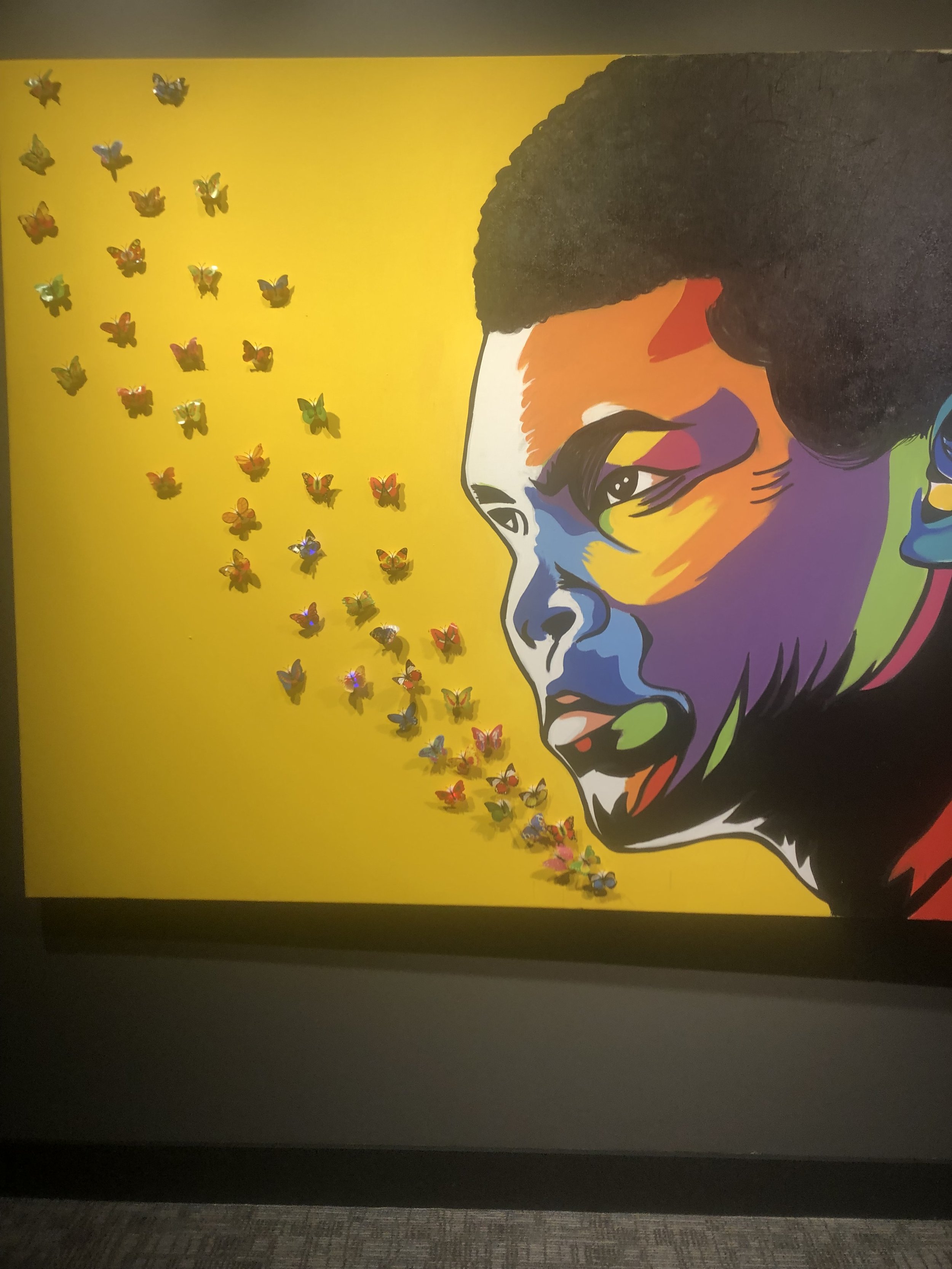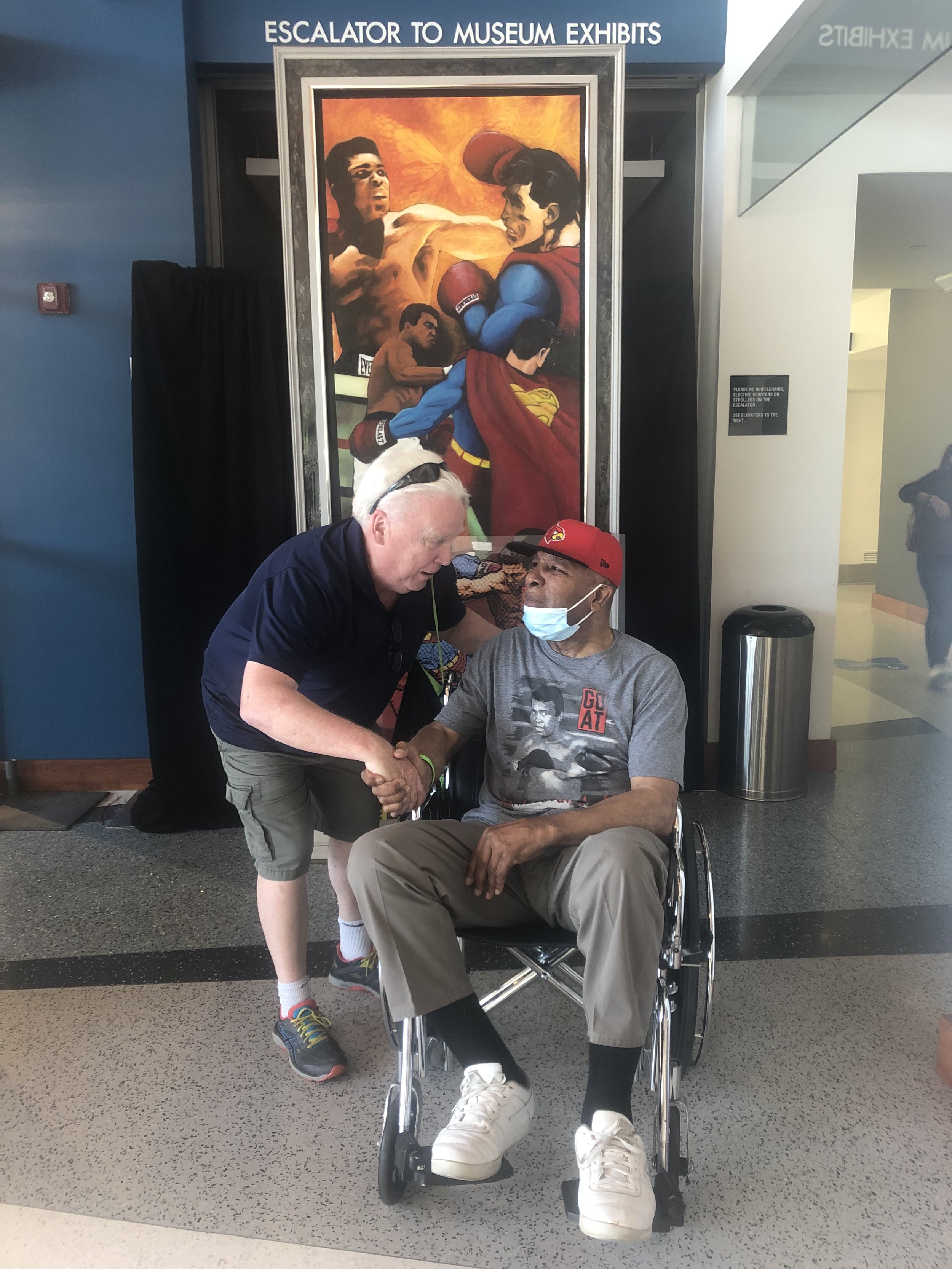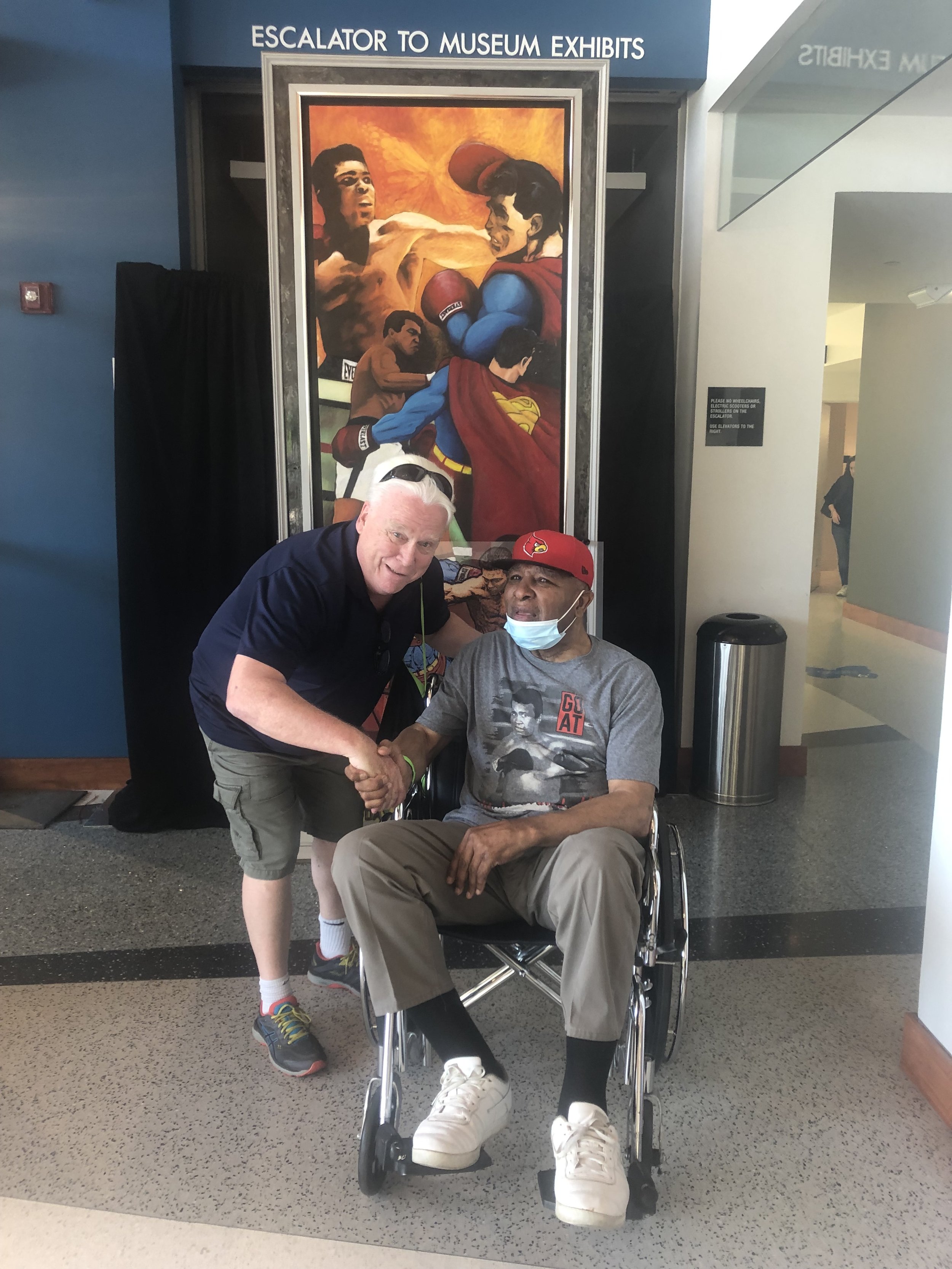Over the course of a 32 year career Management career in the Fitness Industry and a secondary career as a freelance writer, I have attended many conferences, seminars, symposiums, retreats or whatever term is used to describe a meeting of the minds for people with similar professional interests.
Last Saturday March 23, 2019 I attended a vastly different gathering: “The 2019 Parkinson’s Foundation of the Northern Capital Area (PFNCA) Symposium,” an event designed for those facing Parkinson’s disease and their care partners.
Over the course of a day lectures, panel discussions and question and answer sessions were presented by movement disorder specialists, neurologists, neurosurgeons and health educators.
Why a conference on Parkinson’s disease (PD)?
My previous Blogs have provided details on a part time role I have pursued in post-retirement teaching boxing classes to Parkinson’s patients (http://www.aussiemikejames.com/new-blog-1-1/2018/5/21/) the Virginian Outpatient Therapy clinic in Fairfax Virginia. Boxing is one of the major exercise regimes that have shown to be beneficial in delaying the progress of the symptoms of PD.
While I have many years’ experience teaching Boxing and an educational background in exercise science I am not a Doctor or physical therapist. Aside from basic first Aid and some long past certifications in Massage therapy and exercise for rehabilitation I have no real medical training.
By attending this symposium I hoped to increase my knowledge on the origins of PD, its causes, treatments and hopefully potential future cures. Most importantly I wanted to get to know my clients better and have a greater understanding of the challenges they face on a daily basis. Hopefully all of this can only help me provide a better product for them.
As a keen boxing enthusiast and all aspects of exercise I have always been fascinated by the clinical manifestations of PD. I was always puzzled how prominent sufferers of PD in the boxing fraternity like Muhammad Ali, until his final years, and today trainer Freddie Roach could still perform coordinated boxing movements like hitting the punching bag in Ali’s case and in Roaches’ case taking world champions like Manny Pacquiao through his paces on the focus pads, and yet still face significant common PD symptoms like muscle stiffness and rigidity and bodily tremors in the arms and legs.
Another powerful impetus for me to understand more about PD was the passing of my boxing coach, mate, and mentor 1960 Aussie Olympic representative Des Duguid in 2008n from PD.
http://www.aussiemikejames.com/new-blog-1-1/2017/10/31/cddl0da2s8mfs0ln8bi9rihtgqgy57
First impressions
I knew from the outset that initially the biggest difference from my previous professional conferences would be visual. Unlike Fitness Industry conferences, there was nary a bulging bicep, lululemon leotard water bottle and omnipresent protein bar in sight. And unlike writing conferences there were no hard bitten journalists with weary visages from overindulging in coffee, tobacco, and other stimulants to fulfill an impending deadline or starry eyed novelists intent on learning how to write the next great American novel.
There was at least (by my count) 300 attendees and true to the demographics of the disease, the age range skewed to the over 60 years bracket and predominately male with varying degrees of movement restrictions. Some attendees ‘movement patterns were noticeably affected, some barely at all.
As one of my clients told me “for us PD sufferers everything is done slower and more methodically and that truly means everything.” With this in mind I was also careful to refrain from the usual robust, take no prisoners straight ahead, chest out, stomach in, lats spread, walking style you see from Fitness Industry folks. At Fitness industry conferences, particularly the trade shows, you almost spend more time apologizing for bumping fellow attendee’s shoulders than looking at equipment.” Not a good idea at a PD symposium. (NB: Ok for me the stomach in part might be a stretch, but be nice dear reader, you get my general idea!!)
Naturally after a 32 year career in Management that involved a great deal of planning and event management my thoughts turned to logistics. How for instance would the event coordinators cater the meals without encountering long queues and myriad other issues especially if it was hot food? Fortunately the organizers were well ahead of my concerns and actually provided mobile catering direct to participants as they sat listening to lectures. All done very quickly and efficiently including delivery and clean up.
Ok now that my visual and Managerial curiosity was satisfied, what did I actually learn about PD?
8 Key learning takeaways
1. Exercise the best medicine
Nearly all lecturers mentioned that regular intense exercise was the best therapy for delaying the progress of common PD symptoms, like muscle rigidity, loss of strength, balance and motor coordination.
The effects of intense exercise on stimulating endorphin release to improve mood and alleviate depression was also a constant. However as an Exercise professional I do have one concern. In my opinion there is a dis-connect between the medical and Fitness communities. There appears to be a commonly quoted statistic regarding exercise intensity that advises people to exercise to” 85% of their maximum heart rate.”
Even the fittest individuals find exercising regularly at 85% quite difficult and physically taxing. Also determining true maximum Heart rate can vary from individual to individual depending on age and previous activity levels. I would suggest more education on perceived Exertion scales as opposed to being too focused on achieving an estimated beats per minute statistic.
2. Medication Management
It is here where I learned the most. A drug called Levodopa is considered the number 1 drug for controlling the effects of Parkinson’s. The effectiveness of Levodopa and its side effects needs careful management. This Management is often a work in progress where the patient and medical provider have to work closely to determine the effective dosages and most importantly timing of the medication for maximizing its effectiveness.
3. On/off Times
On time is when symptoms are less apparent and daily activities can be pursued more easily. The body appears to have greater flexibility and general mobility.
Off time is when the medication isn’t working and the symptoms are much more apparent with stiffness, shaking and less mobility.
Managing the medication and daily activities around these on/off times becomes a major part of a person with PD’s daily life.
As a teacher I really knew nothing of on/off periods save for a basic gut instinct that when one of my clients tells me they aren’t feeling well enough to box I know they are making the correct decision. This is something an instructor has to be aware of. Our PD clients aren’t high level athletes that you can goad or admonish with “push through the pain, no pain no gain” Rockyesque motivational cliches. These are people seeking to improve their fitness around daily challenges that we non PD people can’t possibly fully understand.
4. Psychological implications often overlooked
The largest impact PD has is on Depression. One presenter stated that depression is 2 times more likely to adversely affect the quality of PD patient’s life than motor impairments.
Depression is usually episodic and often coupled with anxiety and leads to functioning at a lower physical level.
Medications work well with P.D medication and when combined with Cognitive Behavioral Therapy can be every effective in combating Depression
5) Some key terms in understanding Parkinson’s disease
Dyskinesia, - a form of involuntary movement that can range from inconvenient i.e. mild tremors to uncontrollable movements that make daily activities very difficult.
IADLS - “Instrumental activities of daily living," are activities related to independent living and include preparing meals, managing money, shopping for groceries or personal items, performing light or heavy housework, doing laundry, and using a telephone.
Facial Masking, -This term refers to the loss of facial expressions giving the affected person a fixed, mask-like expression. In Parkinson's disease, masking can develop as the progressive loss of motor control extends to the facial muscles as it does to other parts of the body. Masked, expressionless faces can complicate an already difficult situation alienating acquaintances who may be put off or disturbed by the apparent lack of emotional response.
Again this was something I was totally unaware of. I now joke with my clients that I understand why they don’t react to my attempts at humor. It has nothing to do with my jokes being NOT FUNNY!!
6) Newspaper reports on wonder drugs
Many PD neurologist and educators mentioned that Newspaper reports on new wonder drugs are often hyperbole and can give rise to unrealistic expectations that need to be curbed by a more realistic sober analysis from medical research professionals
7) Marijuana,
Similarly Marijuana while a viable treatment modality also has contraindications and deleterious side effects for some individuals. It is not a panacea for all PD patients as often seems to be claimed in over simplified newspaper and media reports
8) The Power of Positivity. You have PD now go live your life
The most meaningful sentiment I heard was from a PD person I spoke to at the conference. Let’s call him Ned. He told me that after months of uncertainty he finally found a Medical specialist who told him. “Ned you have Parkinson’s disease, there will be some challenges but now go live your life!!”
The positive outlook my clients have is a true inspiration that makes teaching them a very worthwhile experience
While these observations are by no means definitive I hope they can be a good starting point for other fitness professionals and people from all walks of life who come to work with PD clients.
Hopefully a cure is imminent. My dear friend and boxing coach Des Duguid 1960 Olympian, Des Duguid eventually suffered from Parkinson’s before passing away in 2008. But I take solace from knowing that Des is posthumously sitting up there in that “big boxing ring in the sky “ smiling like the proverbial Cheshire cat. No doubt he is regaling folks at the pearly gates, in typical colorful Aussie Vernacular, about how very proud he is that the skills he taught are being put to such good use helping people deal with Parkinson’s disease and to “go live their life’ with greater balance, enjoyment and the ability to Keep Punching out Parkinson’s.




















